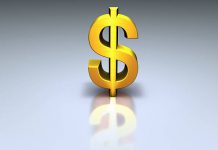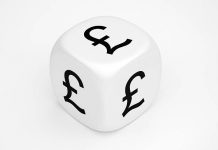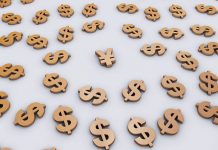It says a lot about markets when the US Senate passes a $500 billion stimulus package, and stock markets go down. Oil, having been stretchered off the field with a season-ending injury earlier in the week, stages a modest recovery overnight and stock markets jump. US Treasury markets and to a lesser extent, the US Dollar, have suffered much the same fate. Safe-haven flows rushing in and out of both on an intra-day basis this week.
What it does add up to is that financial markets are making a lot of noise, pedalling hard, but going nowhere in a hurry. That makes sense when one steps back a bit, as the world has a vast amount of moving parts moving in as yet, quite uncertain directions. COVID-19 has decimated the global economy, and oil’s travails this week should have sapped the delusion confidence of even the most ardent v-shaped recovery desperado. Will countries start to reopen? If they do, will a second wave of COVID-19 infections ensue? What will be the scale of permanent business closures after the dust settles? Unemployment and consumption? How long can central banks backstop the world from having an official recession? The death of globalism and the return of national supply chains? Earnings outlook?
The last is straightforward; it won’t be good. Off course, there are always winners, even in a recession, although I suspect many readers are probably too young to remember such things being possible. Before the torrents of Ok Boomer start, I note that Daughter One thinks the song, Landslide, was written by the Dixie Chicks, and not Fleetwood Mac’s Stevie Nicks. Daughter Two has never heard Bruce Springsteen. They have four newly minted and paid for university degrees between them, but the prosecution rests.
Equity markets have recovered roughly half of the ugly selloffs in March, a most impressive comeback. But if anything, nothing has changed internationally. In fact, you could argue that things have got worse. So, equity markets and gold in particular, and bond markets to a lesser extent, sit at a crossroads now. Unfortunately, those crossroads are unsigned, and the GPS is down. Thus, choosing the next direction from here becomes guesswork, a google map-less shot in the dark.
That explains in no small degree, the back and forth volatility we see at the moment in financial markets. Without a clear map to follow, intra-day sentiment and momentum take over. The end result being that markets chase their tails aggressively on a session or daily basis. After the noise dies down though, we end up going nowhere in a hurry. Quite often, however, investors find they had less money at the end of the day than when they started. Markets like these are prime whipsaw territory.
Investors need to differentiate between trading and investing. Investing is not buying and selling on the same day, having fitted the facts to suit your trading position, and then done the same again the other way in the afternoon. It is though, an excellent way to erode the capital you built up buying that huge dip last month, or the wealth you preserved by heading for the door promptly, also last month. There is no dishonour in waiting for the town maintenance department to arrive with a fresh set of road signs, or for that internet signal to come back -it is no longer a phone signal, the kids tell me – and that mapping app to go back online.
Although we may not get more clarity on the bigger picture with markets today, we will still get plenty of noise. A lot of which may help to confirm the extent of the COVID-19 pandemic on world economic activity in Q2. Australian and Japanese flash PMI’s for April was lower than expected with services unsurprisingly, the worst performers. Manufacturing, by contrast, fell but not as bad as expected, suggesting that the wheels of commerce are still turning in the region, albeit more slowly.
Europe will be front and centre initially. Both manufacturing and services flash PMI’s for April will be released across from across the continent, including the United Kingdom. Services are expected to fare worst, hardly surprising in the lockdown environment. Manufacturing is expected to ebb, but not be crushed like services. A weak reading on this front though from Germany and France could see European markets come under pressure along with the Euro.
The European Council meets today, one day after the ECB said it would accept sub-investment grade BBB- bonds as collateral. There are hopes that the council will make progress on a joint Europe pandemic rebuild response, but I am not holding my breath. With some Northern countries set to ease lockdowns, I expect nationalistic prejudices to make an equally fast comeback. S&P will almost certainly downgrade Italy too, you guessed it, BBB_ tomorrow, so the EU Council meeting has a higher than usual importance.
The US reports Initial Jobless Claims this evening, expected to fall to 4.2 million new claims from 5.5 million last week. In this flip-flop environment, that would probably spur a stock market rally, ignoring the bigger picture of the sheer size of the carnage in the US job market. Conversely, a print at or above last weeks will see equities fall as will US Treasury yields on haven flows. Or oil could rise by one dollar and Wall Street may ignore the jobless claims completely. Such is the world we live in for now.
Equities move higher in Asia following Wall Street recovery.
The recovery in oil prices spurred a recovery in equity prices on Wall Street overnight. The S&P 500 rose 2.30%, the NASDAQ by 2.80% and the Dow Jones by 2.0%. That has dragged Asia mostly higher today, although by a much more modest degree. That is in keeping with the tone of the week, whereby Asia has slavishly followed Wall Street but by a much more muted degree.
China has just released final Dollar-denominated export and import data for June. Imports fell by 1.0%, but exports fell by 6.6%. Although expected, the confirmation that China is not immune to an external demand shock has taken the edge of the rallies across much of Asia.
Although the Nikkei 225 is 0.75% higher, the Kospi is up 0.50%, Mainland Chinas Shanghai Composite and CSI 300 have fallen 0.20%. Singapore is now down 0.10%, and the Hang Seng is flat. China-centric Australia has seen the ASX 200 fall 0.40%.
Equities lack momentum in Asia today, so the falls post the China data could easily be reversed in early Europe. Much will depend on the European PMI’s that will be released between 1515 SGT and 1630 SGT this afternoon.
Currencies remain becalmed in directionless trading.
Currency markets remain content to range trade, refusing to by into the oil hype of the last few days. Instead, forex markets are preferring to gently move with whatever the intra-day sentiment of the day is, making for a somewhat dull picture. That may be no bad thing, though.
Petro-currencies recovered last night as oil staged a small rally in the context of recent news. Those traders looking for volatility in FX at the moment will find their wants met in this grouping.
Commodity currencies such as AUD, CAD and NZD staged modest rebounds over the last 24 hours but will likely run out of steam after the disappointing China data.
Oil rebounds but the rally look tenuous.
After receiving multiple 8 counts this week, and in WTI’s case, falling through the ropes, both contracts managed to complete a round unscathed overnight. The recovery was helped by the news the largest US oil ETF had rolled much of its positions into the July contract, reducing the delivery concerns in the near dated June one. US official crude inventories climbed by an expected 15 million barrels. Although the build was massive, it was a case of no news is good news for oil markets, and that assisted in oil’s recovery.
The oil price recovery continues modestly in Asia today. Brent crude has climbed by 50 cents, or 3.0%, to $21.00 a barrel. WTI has risen by 55 cents, or 4.0%, to $14.40 a barrel. Although in percentage terms, the jumps look impressive, we must note that that is because oil prices have collapsed to multi-decade lows. In that context, the rallies look anaemic and fragile at best. With a galactic oversupply of oil, and no sign of OPEC+ or Oil Commissions in Texas and Oklahoma getting their acts together, extreme caution should be taken over oil’s recovery. Both contracts are only one negative headline from retesting their lows.
Gold rises as it remains handcuffed to equity prices.
The linear correlation between gold and equities continues unbroken. The rally in equities overnight dragging gold higher by 1,60% to $1714.00 an ounce. The $27.0 an ounce rally was impressive when taken in context alone, but given the outperformance by Wall Street, one can’t escape a nagging doubt that this was a proxy equity move and not a rally by gold.
Until gold disentangles itself from whatever equity/gold structures are locking it into what seems to be a 100% correlation, calls for a test of decade highs around $1800.00 an ounce are premature. Instead, as I said yesterday, gold will most likely continue to trade in a noisy but wide $1650.00 to $1750.00 an ounce range.













